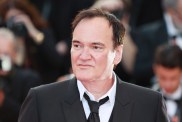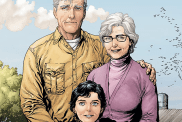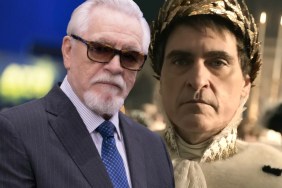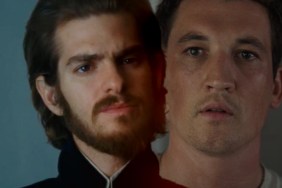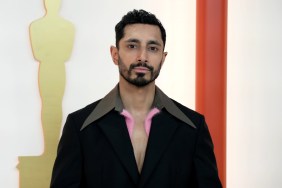Sony Pictures Entertainment provided ComingSoon.net the chance to chat 1-on-1 with director Jason Reitman (Juno, Up in the Air, forthcoming Ghostbusters 3) for his political biopic The Front Runner, based on the presidential campaign former Senator Gary Hart. We asked Reitman to tell us his 5 Favorite Scenes From Political Movies, and he took extra time and care to think about the topic. Check out his choices below, and click here to order The Front Runner on Blu-ray!
RELATED: Alex Wolff Joins Hugh Jackman Comedy Bad Education
Oscar nominee Hugh Jackman stars as the charismatic politician Gary Hart in the film that follows the rise and fall of Senator Hart, who captured the imagination of young voters and was considered the overwhelming front-runner for the 1988 Democratic presidential nomination when his campaign was sidelined by the story of an extramarital relationship with Donna Rice. As tabloid journalism and political journalism merged for the first time, Senator Hart was forced to drop out of the race – events that left a profound and lasting impact on American politics and the world stage.
RELATED: The Front Runner Casts Ballot To Be the First Movie to Open on Election Day
The Front Runner also stars Vera Farmiga (The Conjuring), J.K. Simmons (Juno), Alfred Molina (FX’s The Feud), Sara Paxton (Twin Peaks), and Kaitlyn Dever.
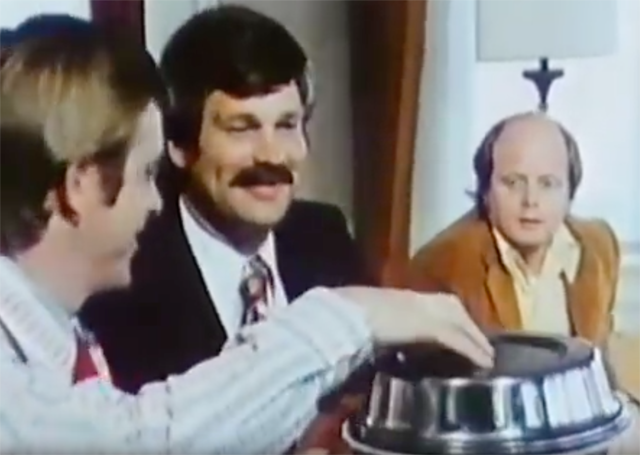
#1: “The Candidate”
“The Candidate” is a film that, in speaking of “The Front Runner,” my co-writers, Jay Carson and Matt Bai and I -before we started working on the script- they came over to my house and we watched “The Candidate.” It became the north star for the movie. “The Candidate” is a movie in which the political conversations are completely interwoven with the innocuous conversations. It really mirrors real life. Dialogue is messy. You always have to search every conversation for what is relevant. There’s a scene in “The Candidate” that typified that perfectly.
It’s a scene in which a group of people in the campaign are in a hotel room and they’re going over the parade route for Redford’s character in San Francisco. He’s going to be going down the street. There’s one man that’s going over how they’re going to block certain streets and where the cameras are going to be and how they’re going to drop balloons. Then, almost immediately, the door opens and room service has arrived with sandwiches, and the conversation is taken over by people arguing over who ordered which sandwich.
It’s kind of the perfect example of something they do throughout the film in which you are tracking simultaneous conversations: A conversation about sandwiches and a conversation about parades. As an audience member, you’re trying to figure out, “What is the more relevant conversation right now?” Of course, this is a metaphor for the entire movie philosophically. When we watch a campaign happen, what is the relevant information? When it came to “The Front Runner,” that was a key idea in terms of the Hart scandal, what about it was entertaining versus what about it was important?
There is a sandwich conversation in “The Front Runner” that is 100 percent a little love note to “The Candidate.” And in fact, there is actually also a scene where a reporter identifies himself as Mike Ritchie from Texas, and that is a nod to the director of “The Candidate,” Michael Ritchie. And this is not my only sandwich scene that I’m going to be talking about today.
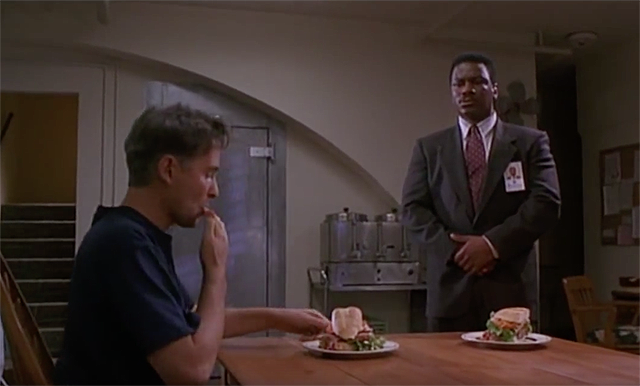
#2: “Dave” (1993)
I will segue into sandwich scene number two, and that is, the sandwich scene from my father’s movie “Dave.” “Dave” is one of my favorite political movies. I am, in fact, in “Dave” for a brief moment. I play Ben Kingsley’s son, when he’s inaugurated President at the end of the movie. Spoiler alert.
This is the scene with Ving Rhames. Ving Rhames plays the secret service agent tasked with protecting Dave. In the movie, Kevin Kline plays a presidential impersonator who is then put in the job of the genuine article. He has a middle of the night scene, where he’s making a sandwich with Ving Rhames. He’s asking about this presidential affair that led to the death of the real president, and finally ends up asking, “So would you really take a bullet for the president?” And Ving Rhames says, “Yes.” And Kevin Kline concludes, well, I guess you’d take a bullet for me, then.
It’s a beautiful little scene that’s really funny and so much work is done in so little dialogue, where they take you through the affair that happened before, how that got them to where they are. You see the ice melting between these two people.
By the end of the movie, Ving Rhames says to Dave, “I would’ve taken a bullet for you.” The best moment in the whole movie. It’s all setup in this small sandwich-making scene. It’s a perfect version of hidden construction, where the toughest things to do in the movie is hide all the piping. They do it perfectly in that scene.
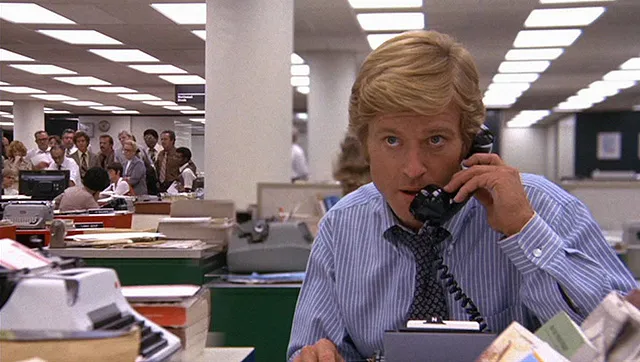
#3: “All the President’s Men”
There’s so many good scenes in “All the President’s Men,” But one of my favorites is a long shot of Robert Redford on the phone doing back-story investigation. And it is one long continuous zoom into Redford. And in the background, there are kind of people centered around a television, and it is this long zoom shot where they’re doing a split diopter, but it is also a sliding split diopter. So what they did was, they built for the shot a split diopter in which you could actually slide the half piece of glass evenly throughout the shot, so as the zoom changed the framing of what was on the left and the right you could actually move the line of where the focal length changed. And so, it’s a beautifully shot single of Redford that is doing something magical that you don’t know while it’s happening.
But more importantly, it’s just a magnificent piece of acting. And it’s easy to forget how good an actor Redford is. You know, he’s so damn handsome and so damn charming that sometimes I think we can kind of chalk him up to just being a good looking, charming guy. And he’s a brilliant actor. One of my favorite techniques of his is something that he really shows off in the scene, which is purposeful mistakes. He has all these little moments that come across as though he fucked up on set, and I know he didn’t.
The most known example in that moment is when he’s on the phone with someone who speaks Spanish and he’s like, “Oh wait,” and he looks over his shoulder and says, “Does anyone speak English here? Oh god, does anyone speak Spanish?” And he looks like he just flubbed a line. He does the thing that we do in real life all the time, where we jumble our words and we make mistakes, and it makes the scene so authentic. He seems so charming and accessible. It penetrates his attraction, when he does that. It makes him more human. If you start looking for it in his work you see it all over the place, these little stumbles, moments where he’s caught off guard. More than any other actor, when he seems surprised by something, it’s so legit. He just gets this look in his eye like, “What?” And it’s a piece of acting, where he owns the movie for a moment, and it’s all on his shoulders and he handles it perfectly.
I may be mixing up two shots. I may be mixing up that shot, where the TV’s in the background and then the long interview scene, where it’s just him on the phone. And maybe there’s just some people in the background. So I apologize if I mixed those two up.
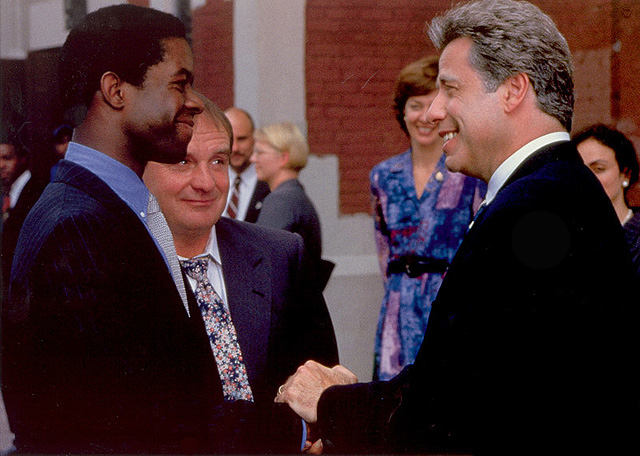
#4: “Primary Colors” (1998)
I love “Primary Colors,” love the script. The direction is incredible. Mike Nichols is one of these guys where he has so many brilliant movies that it’s easy to look at “Primary” and think of it as just one of his middling movies, when in fact it’s completely brilliant. It just happens to not be “The Graduate.” And it has one of the best character introductions of all time. You have the actor who’s shown up to be the presumed campaign director. They want him on the job. It is through him that we meet –not Bill Clinton- Jack Stanton.
We’re meeting this actor, Adrian Lester, who plays Henry Burton. And he’s shown up and we’re hearing about who Stanton is by everybody else. And certainly, this is something that we were exploring in “The Front Runner,” which is, how do we explore the character of Gary Hart through everybody? “The Front Runner’s” not a biopic, it’s a movie about Gary Hart, but from the outside in, from the perspective of 20 different people who have 20 different points of view on him. “Primary Colors” was interested in something similar. How do we understand Stanton from the outside in? It’s Elaine May’s amazing script.
We’re on the outside meeting him through the different members of his staff. And then, we see him in his library, and we don’t think much of him until he suddenly tells this story about bravery. He tells this story about his uncle who comes back from the war and is terrified to go get a job, and you finally find out it’s because he couldn’t read. He speaks to the people who are adults learning to read in that library and says, “You’re braver than this man who went to World War II because you’re seeking literacy.” Everybody cries, and he cries. Adrian Lester starts to cry. He spent the whole entire scene, all the way up to there, saying he can’t be moved and he’s not going to take the job. And of course, he’s crying. Without dialogue, we know he’s taking the job. Then, that night, he’s talking to someone else on the campaign and finds out the story’s bullshit. It’s one of the great character introductions of all time.
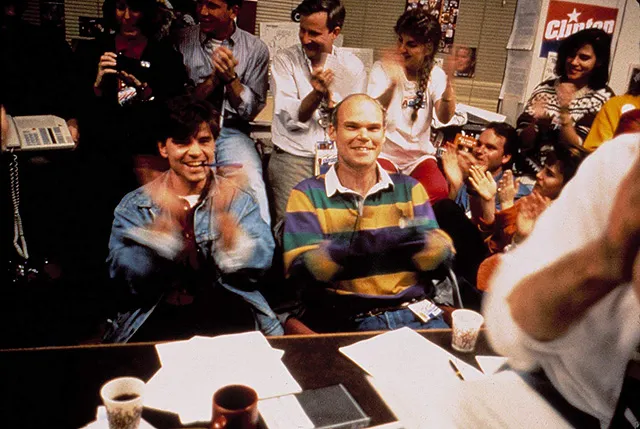
#4.5: “The War Room” (1993)
I can almost pick “The War Room” because we watched “The War Room” many times for “The Front Runner” and there’s a lot of details in “The Front Runner” that we stole from “The War Room,” including eating popcorn out of coffee filters, because they ran out of bowls. It’s just the best detail and one of the best scenes.
I think they actually took this scene and they turned it into a movie, it was Carvel and Mary Matalin, his girlfriend. And they were working on opposite teams. You see them firing off at each other in different TV pieces and they’re crackling wit. They finally see each other and they’re a romantic couple that never sees each other, and they finally see each other.
And in this moment, where they’re just walking together and kind of smirking to each other, and you can feel the media trying to understand this couple and how they work. And the secret smile that they have for each other is the kind of secret romance I think we all wish we had and aspire to, that glowing connection that is visible from the outside, that we all wonder what secrets lie on the inside.
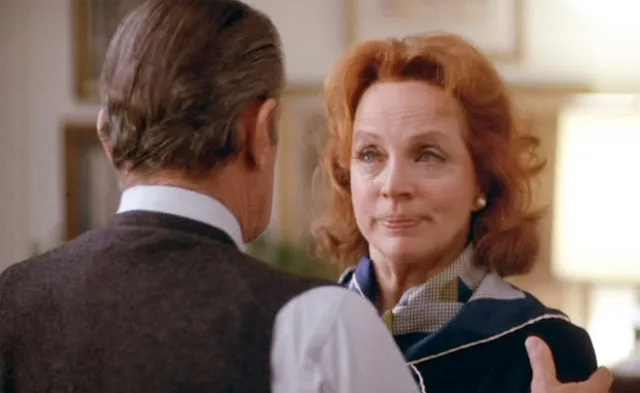
#5: “Network”
For my final one I will go with “Network,” if we can call that a political movie. My favorite scene in “Network” is an apolitical scene. It’s the scene in which Max admits his infidelity to his wife, whose character name was Louise. It’s just one of the greatest scenes from inside a marriage that I have ever seen. Iit is so raw and so human and heartbreaking and also funny and open in its verbiage and the way she asks him, “Are you in love with her?” And he thinks, “I don’t know.” They speak with this brave kind of honesty that we don’t see in real life, but also don’t see onscreen.
Relationships are politics. We often forget about them in political movies, that when everything is going along for a candidate, there is a marriage at home. There are children at home. People are trying to navigate everything that is complicated about being married, while trying to do their everyday jobs. Chayefsky’s script, which is brilliant, takes this moment. It’s this four-minute scene to think about everything that is happening at home while all of these public things are happening and does it perfectly. I’ve seen movies try to accomplish over two hours what they do in four minutes in that scene.
The Front Runner
-
The Front Runner

-
The Front Runner

Hugh Jackman stars in Columbia Pictures' THE FRONT RUNNER.
-
The Front Runner
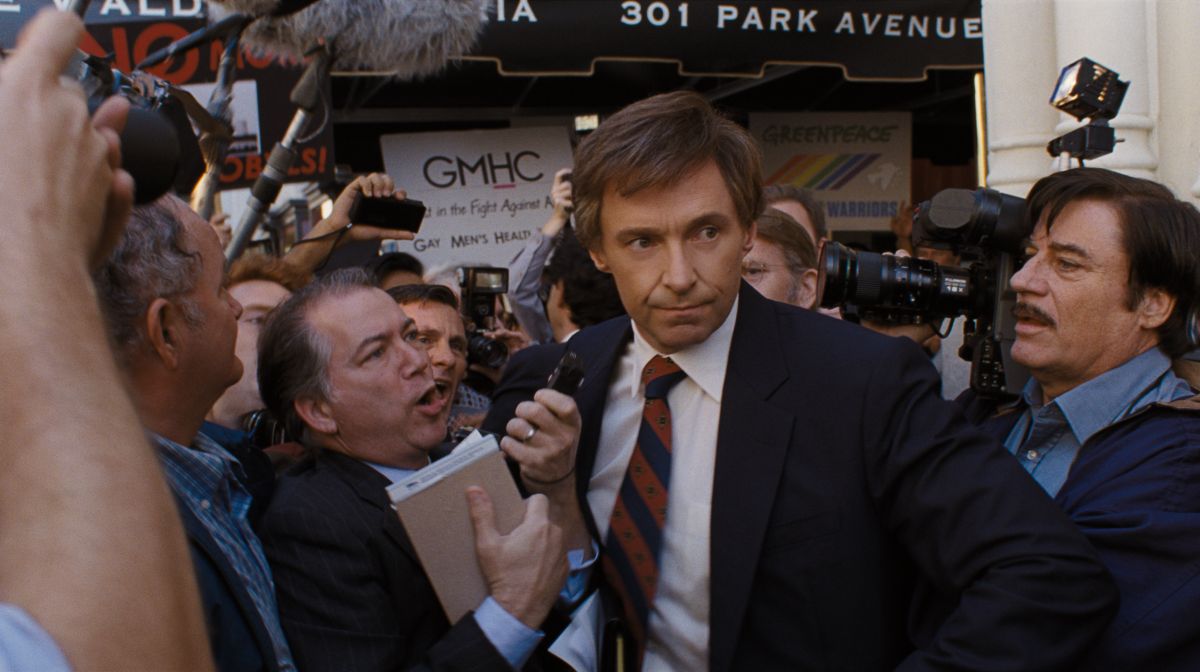
Hugh Jackman stars in Columbia Pictures' THE FRONT RUNNER.

